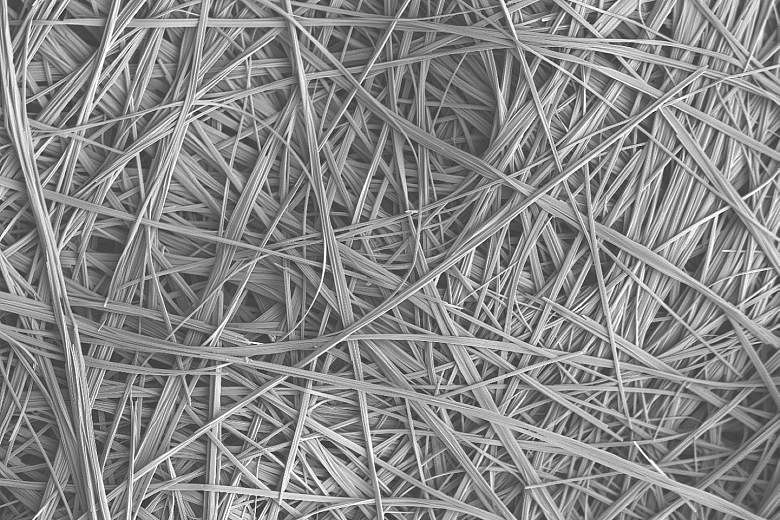The threat of an environmental disaster posed by a large marine oil spill may soon be reduced, with the advent of a technology - developed by Singapore-based researchers - that could clean up a spill quickly and safely.
Scientists at the Agency for Science, Technology and Research's (A*Star) Institute of Bioengineering and Nanotechnology (IBN) have synthesised an environment-friendly concoction that can solidify oil rapidly for easy removal.
Their secret is a substance whose molecules chemically self-assemble into a three-dimensional net that traps oil.
Existing oil spill treatment methods, such as burning, are not ideal as they cause secondary pollution and do not work well in rough seas.
Oil also becomes harder to burn the longer it is left in the open due to chemical changes and the evaporation of its more volatile components.
Another existing treatment method is the use chemicals to break the oil up into smaller droplets that decompose via bacteria or sunlight, but the chemicals are toxic to humans and the environment and the whole process takes a long time.
In 2010, the blowout of the Deepwater Horizon oil rig released about 4.9 million barrels of crude oil into the Gulf of Mexico over an area of more than 175,000 sq km.
Such spills, if not brought under control quickly and safely, could cause widespread environmental destruction.
For example, the grounding of the oil tanker Exxon Valdez off Alaska in 1989 inundated thousands of kilometres of coastline with crude oil, killing wildlife en masse and destroying natural ecosystems.
The dispersant used to treat oil from Deepwater Horizon was also suspected to have caused deformities and lesions in fish.
IBN executive director Jackie Ying said: "Oil spills have a disastrous impact on the environment and marine life, and result in an enormous economic burden on society."
In their study, published in the journal Chemistry Of Materials last month, the IBN researchers described their discovery of a substance whose molecules stack themselves together quickly to form nanofibres.
These then spontaneously clump together, forming bundles of about 1,000 to 400,000 nanofibres each.
For use in oil-tainted seawater, the nanofibres are mixed with ethanol and ethyl acetate, which are largely non-toxic substances commonly found in fruit and wine.
The fibres themselves do not seem to be toxic to human cells or zebrafish larvae, according to tests.
On contact with the oil in seawater, the nanofibre bundles spontaneously intertwine to form three-dimensional nets that trap the oil, and become floating masses that can be scooped up easily.
IBN research scientist Ren Changliang said that it takes only seconds to minutes for this to happen, depending on the type of crude oil.
At the microscopic level, it is not unlike Hollywood science-fiction movies, in which alien parasites spread their suffocating tentacles all over hapless earthlings.
The 3D net belongs to a class of materials called supergelators, meaning that it is able to immobilise an amount of material, in this case oil, over 100 times its own weight.
This means that very little supergelator mixture is needed to treat a large quantity of oil, said IBN principal research scientist Zeng Huaqiang.
"In principle, there is no limit to the scale of oil spill it can treat. Our supergelators are especially effective at treating large-scale oil spills," he added.
The researchers are now testing supergelators with different molecular structures and trying to optimise performance.
So far, the supergelators have been tested on various types of crude oil, exposed to the elements for varying lengths of time in the presence of sea water, and have proven effective in all cases.
The researchers said the supergelators work even under vigorous stirring of the mixture in the laboratory to simulate wave action, but field tests need to be done to confirm their effectiveness in rough seas.
It may also be possible to recover the oil through distillation, as the researchers showed in their study using diesel.
IBN is now seeking industry partners to test the technology in the field and upscale it for commercial use, as well as find ways of recycling crude oil recovered from the sea.
Prof Ying said that if commercialised, the cost of treating oil spills using this technology is expected to be competitive when compared with that of current treatment methods.
According to reports, treatment now costs about US$100 (S$135) per litre of crude oil spilled.



